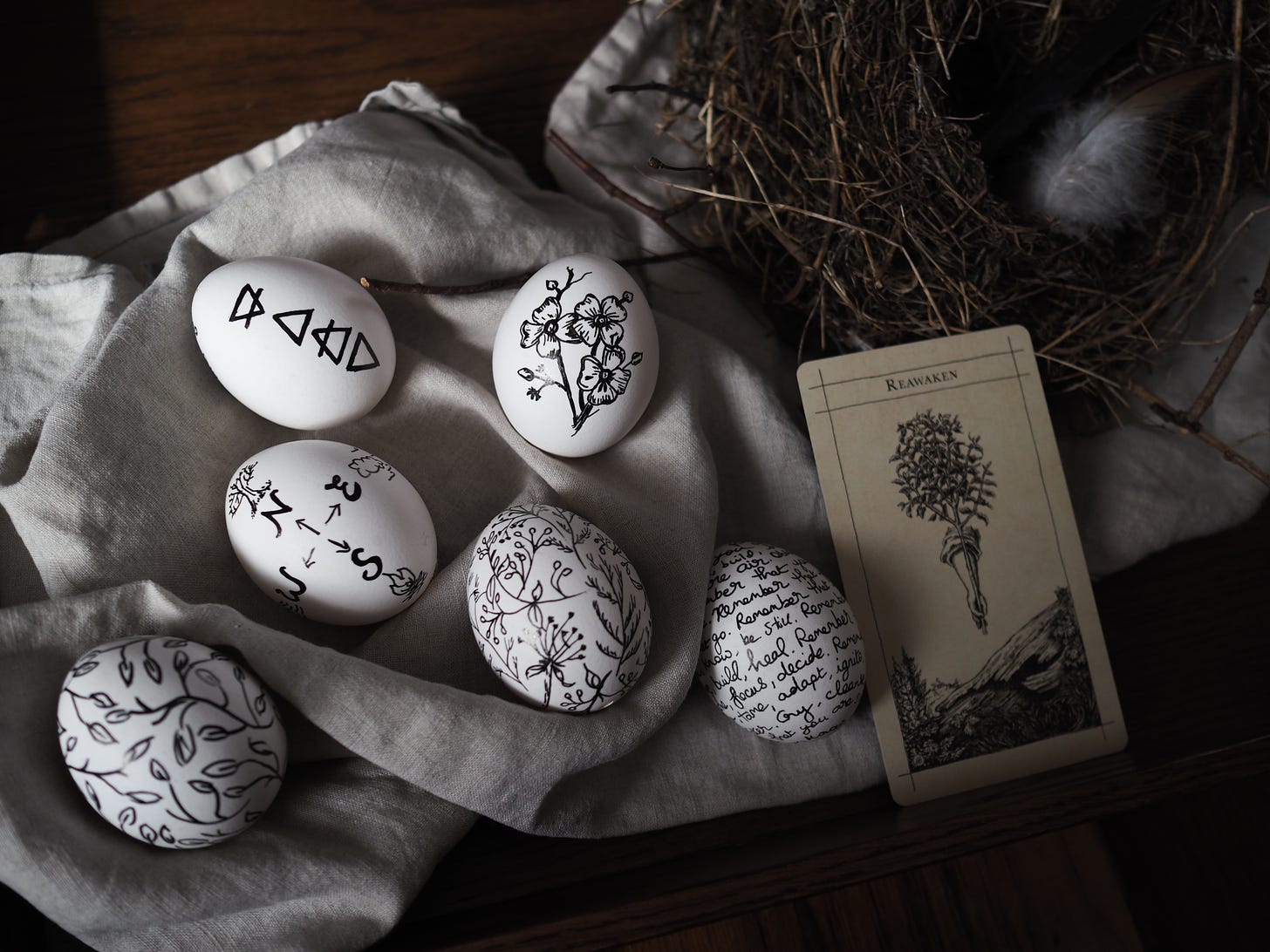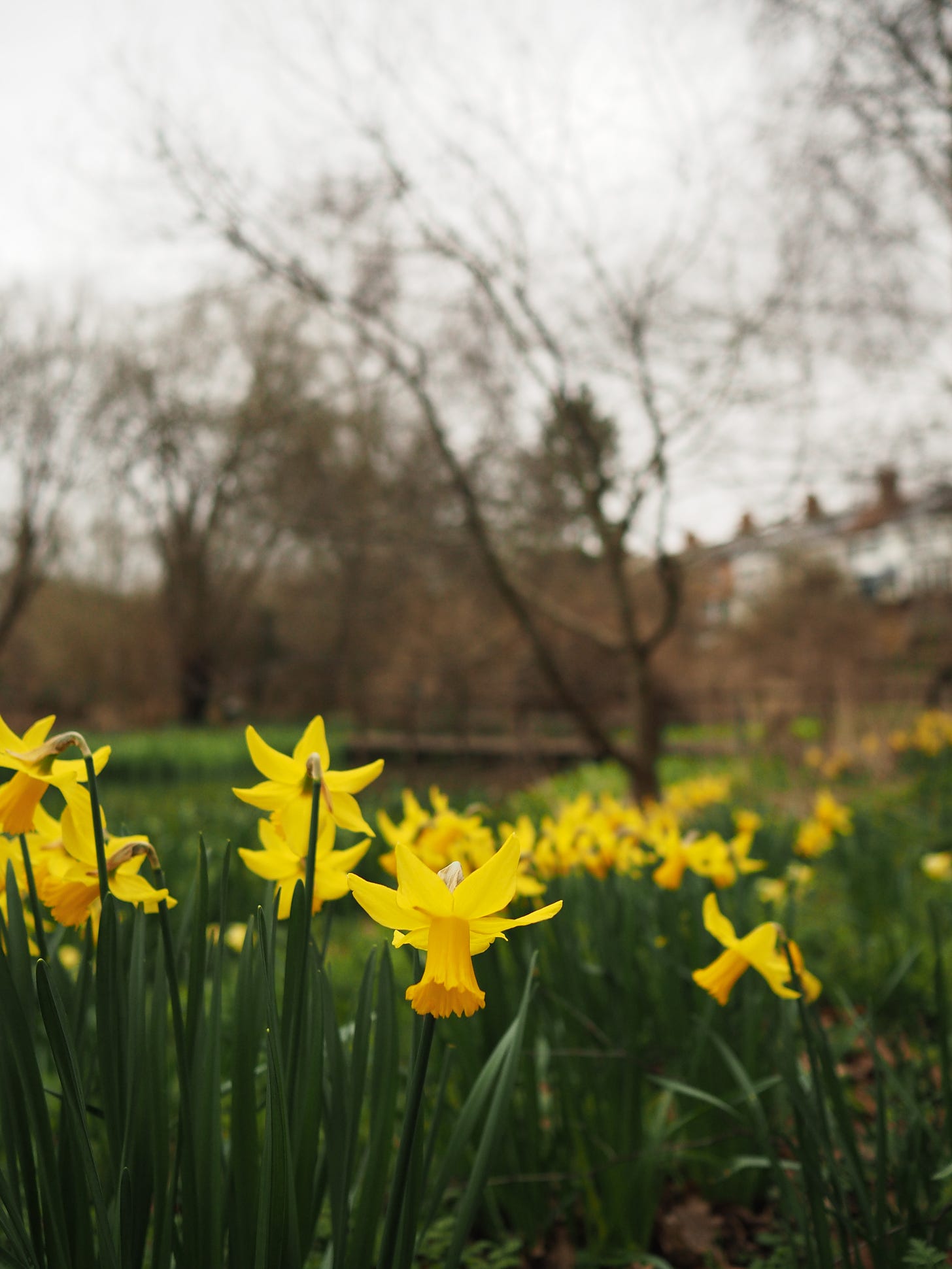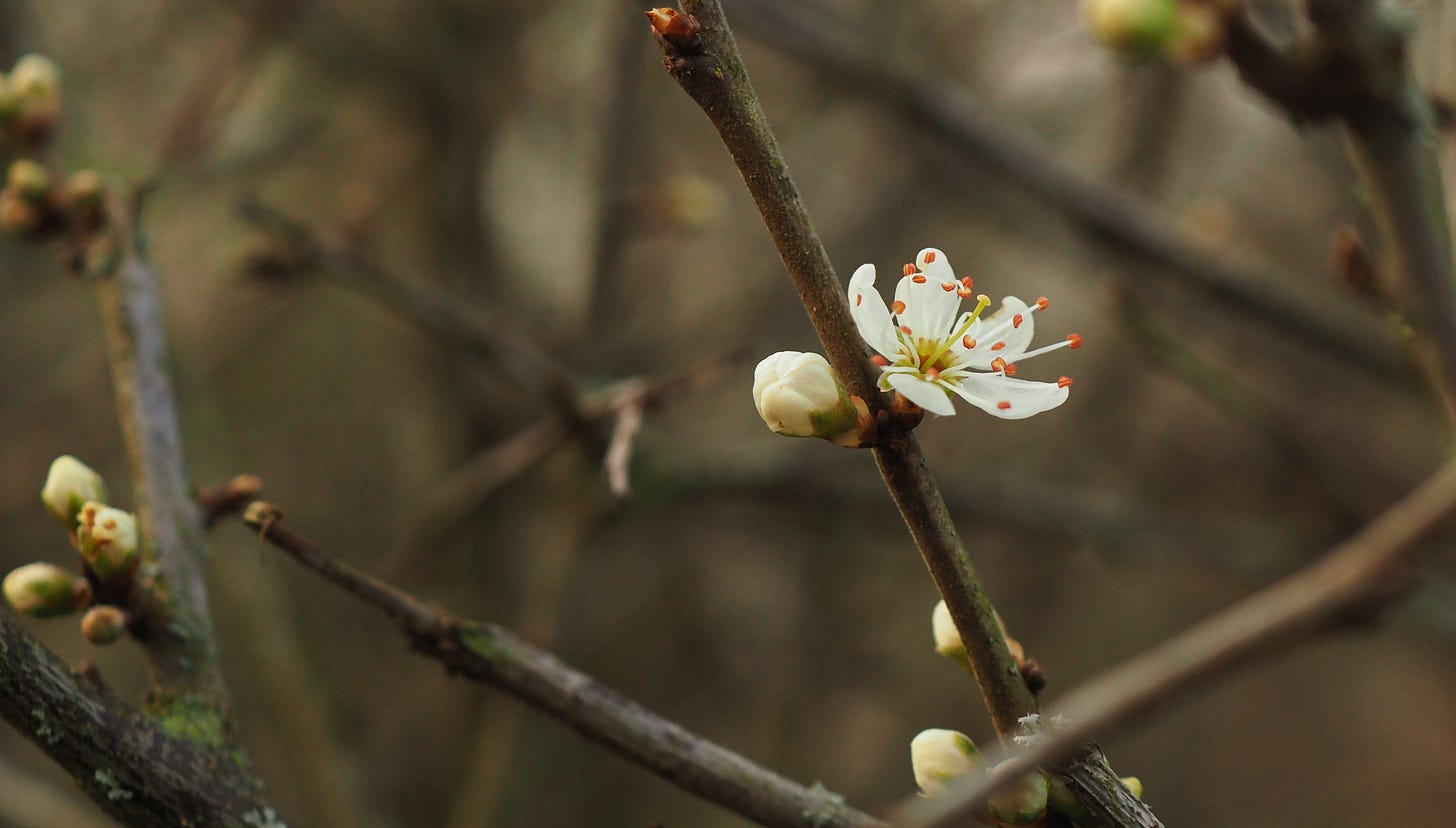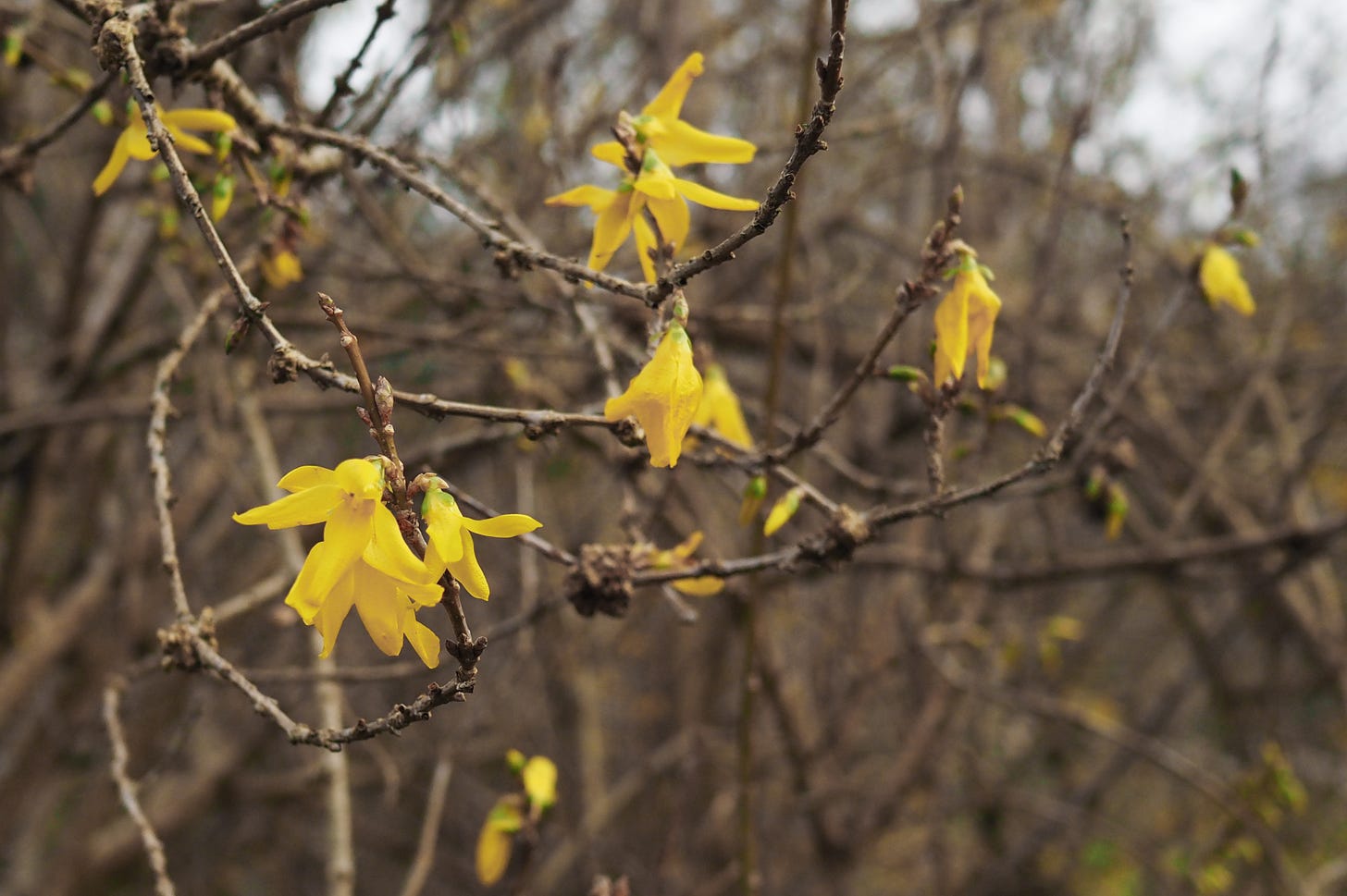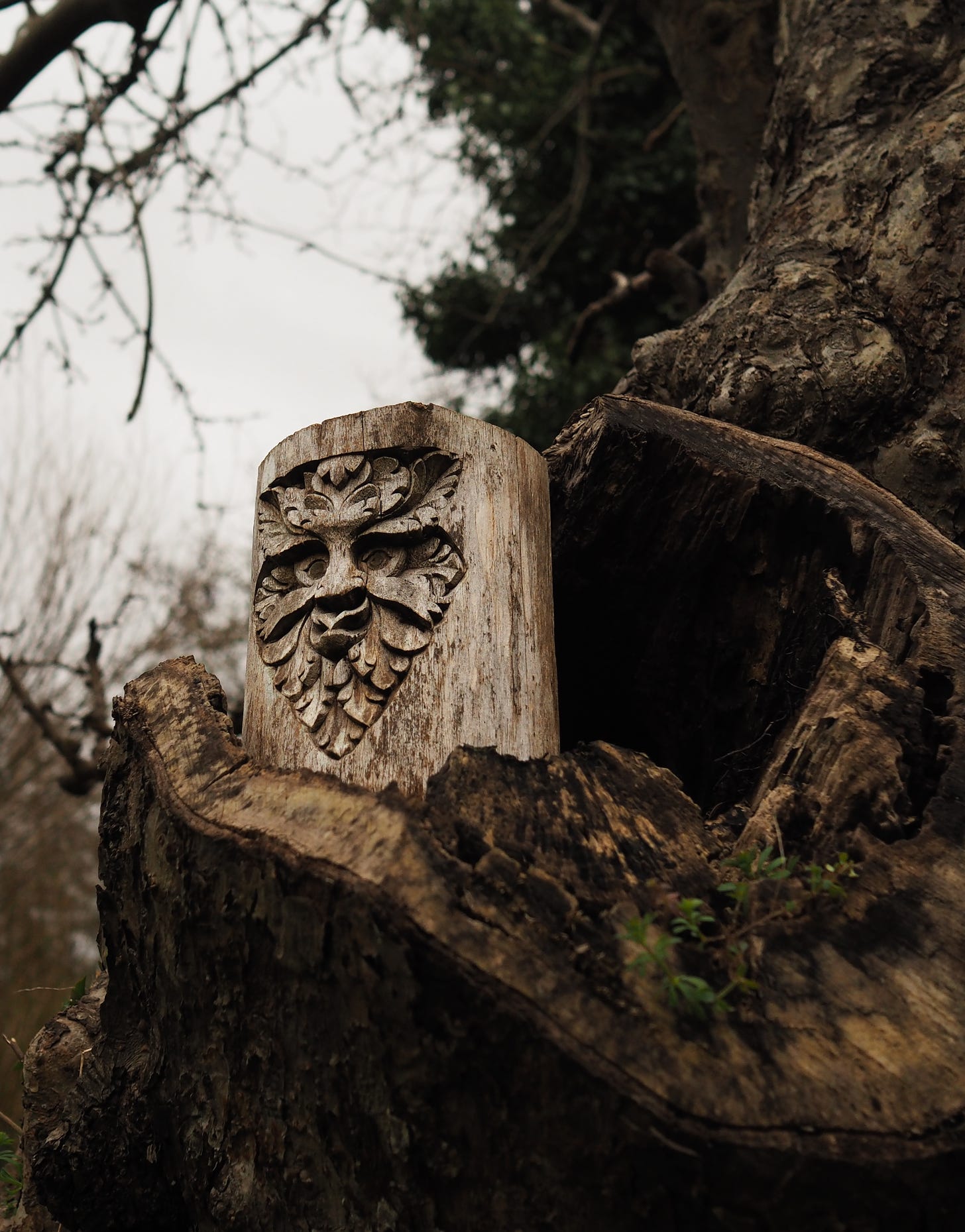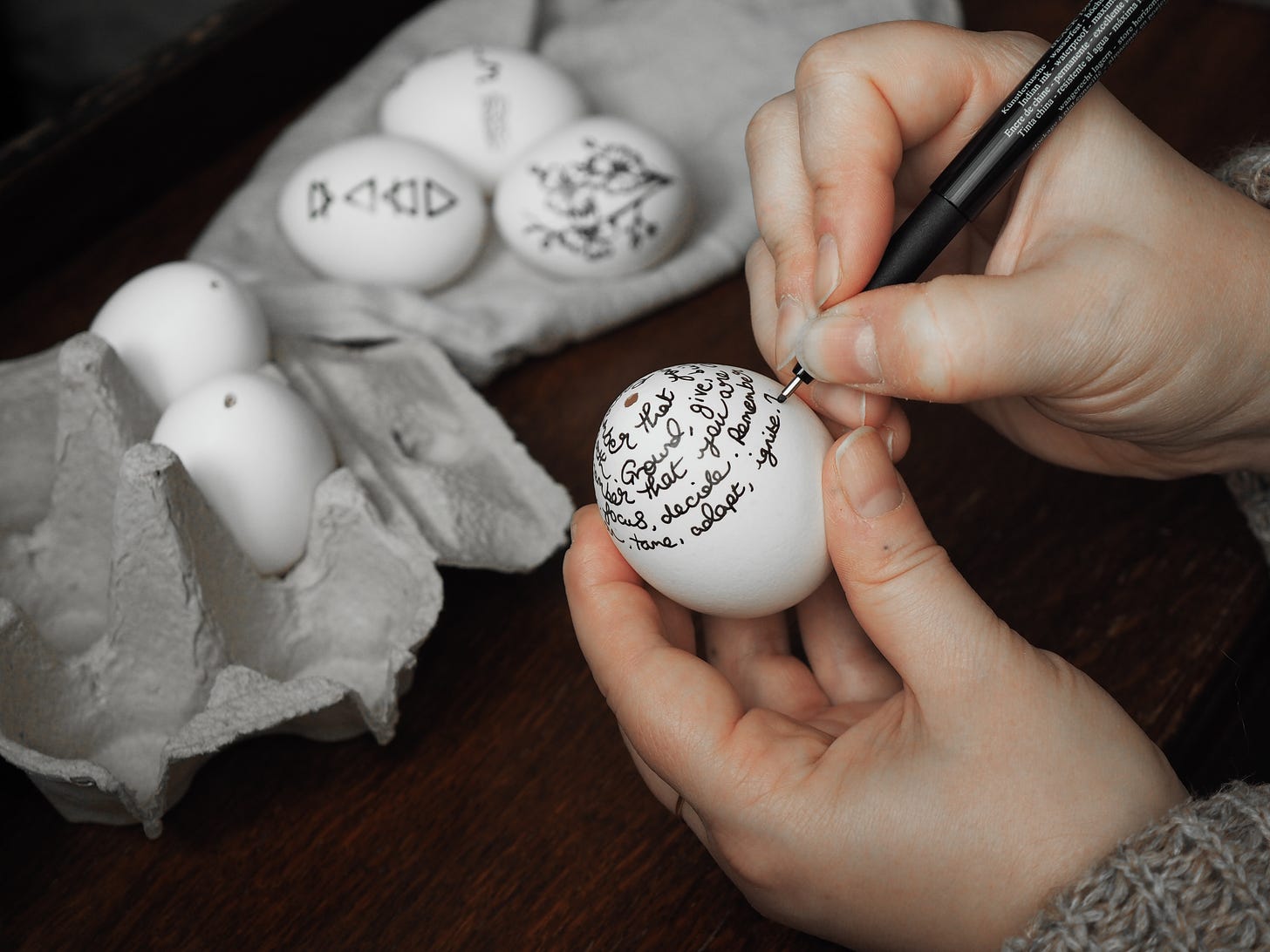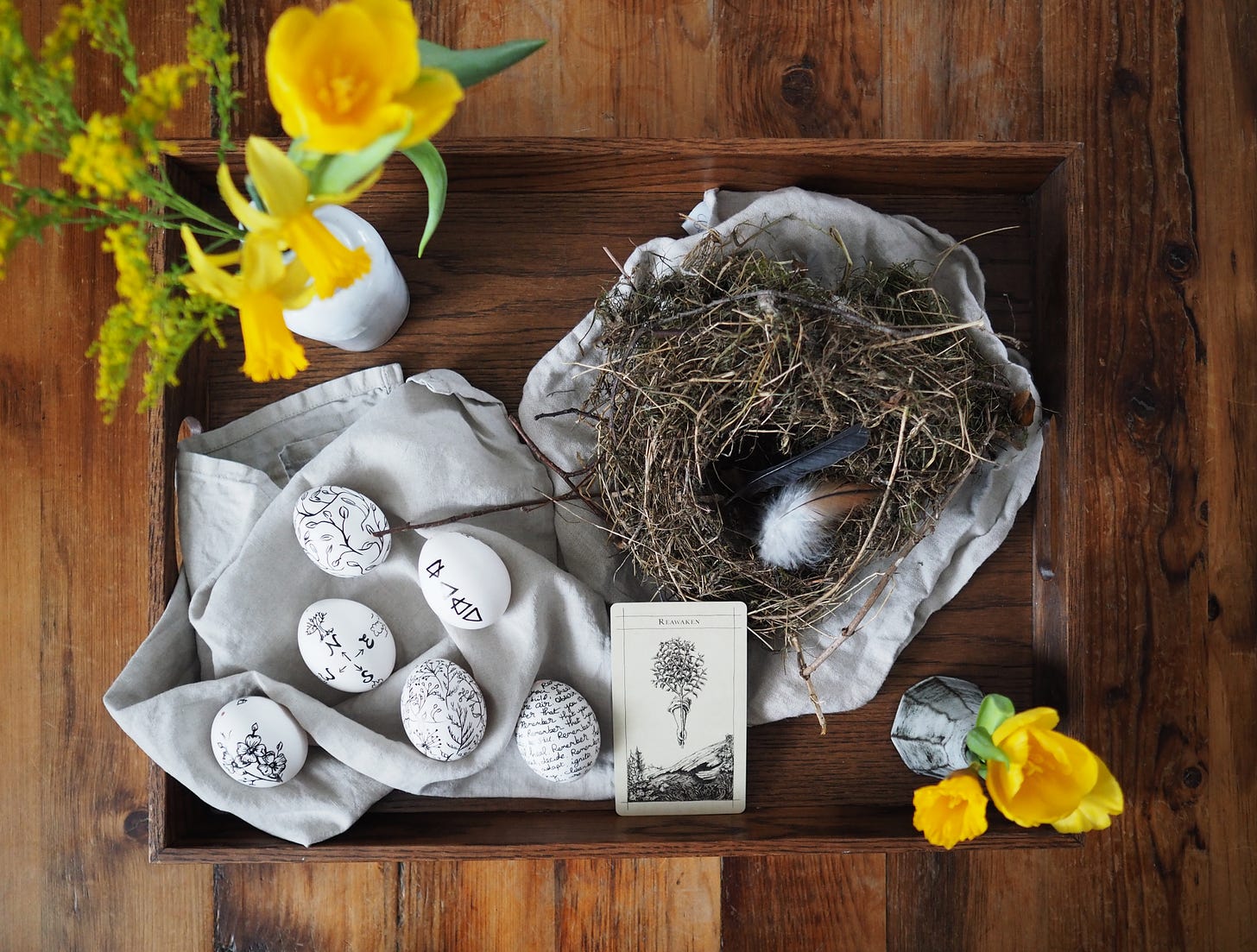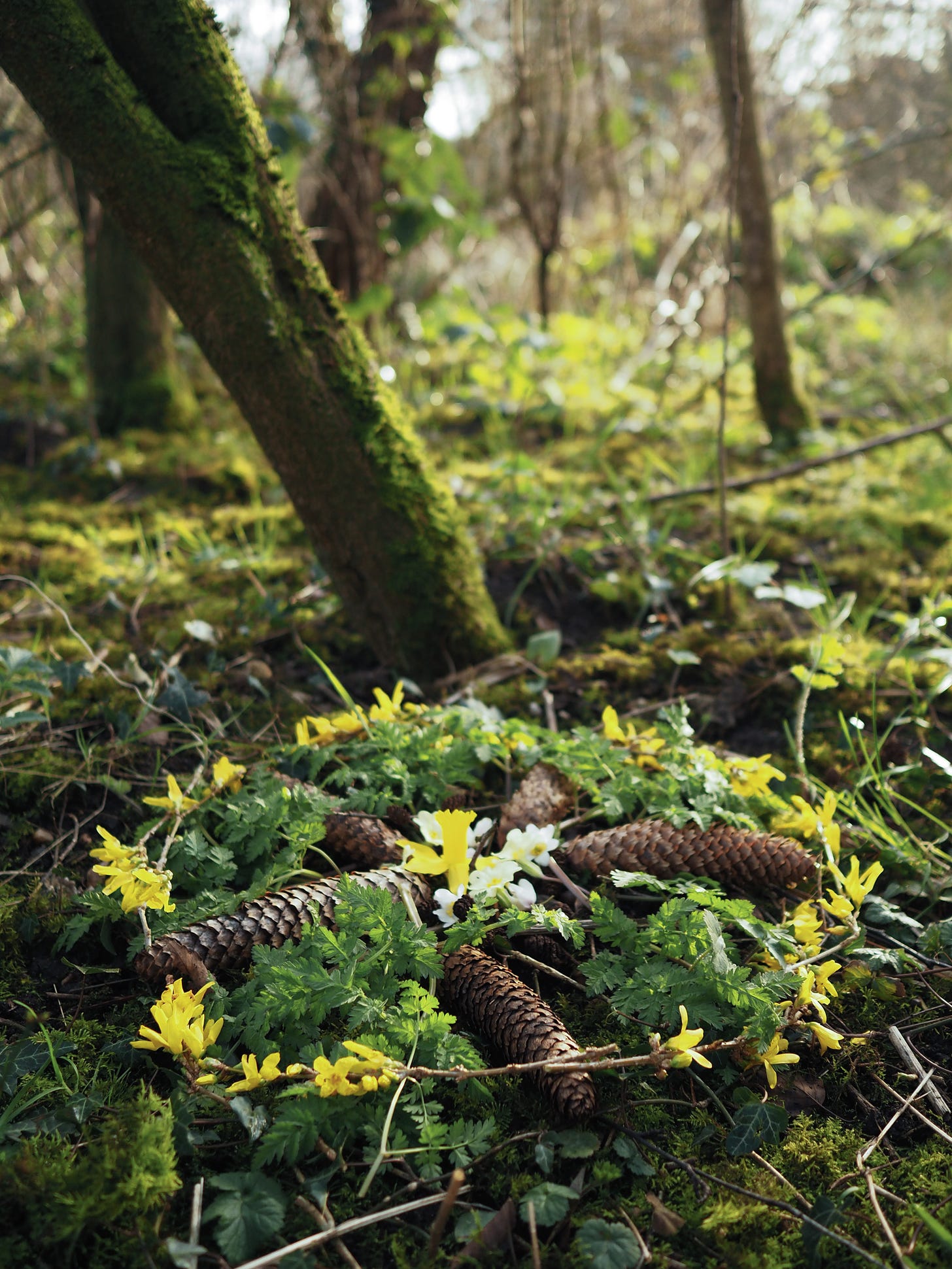Last summer I saw a hare for the first time. It was bounding along the inside of a low field hedge, which I was the other side of. I was mesmerised. It paid little attention to me as it continued on its solitary mission. There were red kites circling above and I wondered if that was the reason for its hurried pace. It was larger than I expected and at first glance I thought it might have been a small muntjac, but there was no mistaking the length of the ears and its lithe, nimble body. The experience was short but enchanting and made me wonder how I could see more of these elusive creatures.
Last week I decided to go back to that same rural spot and see if I could find more hares. Having read about March being a good time to see them and their characteristic boxing rituals, my hopes were high. Sadly though, I didn’t manage to see any on that particular day. Instead I came home having seen a pretty (but fleeting) rainbow, so it was still a worthwhile journey.
The hare is a symbol of a festival called Ostara, which coincides with the Spring or Vernal Equinox which falls between the 20th and 23rd of March. This year, it’s March 20th at 9:24pm GMT (today). The Spring Equinox marks one of the two points in the year when the sun illuminates the northern and southern hemispheres equally. The Autumn Equinox, (when a festival called Mabon is also celebrated) is the other. Both equinoxes have equal hours of daylight and darkness.
Why don't the solstices and equinoxes happen on the same days every year? According to the Royal Museums Greenwich1, this is the reason:
The Earth takes approximately 365¼ days to go around the Sun. This is why we have a leap year every four years to add another day to our calendar. For the same reason the precise time of the equinoxes are not the same each year. Generally they will occur about six hours later each year, with a jump of a day (backwards) on leap years.
From today, the daylight will gradually outnumber the night hours as the earth continues to wake up. Already there are yellow flowers everywhere: daffodils bordering grassy banks, forsythia brightening up still-brown hedges, buttery coloured primroses peeking out from the first of the green growth on the ground. Even the pond’s lilies have opened out into little golden bowls sitting atop their pads. It feels like the brightness has arrived. It feels hopeful.
According to folklore, Ostara or Eostre is thought to have been the Anglo-Saxon goddess of Spring and Rebirth. She was associated with the countryside waking up after winter, and also with the moon. As well as the hare which symbolises freedom and courage, another potent symbol of Ostara is the egg: birds are mating and nesting and new life is beginning at this time of year.
Through the mists of time, eggs have been a universal symbol of fertility, birth and potential. Old folk customs for Ostara are thought to have included burying eggs in the earth each spring to give back their life-giving properties and ensure a good harvest.
I love observing the changes in nature each week and month. And I particularly love marking these changes with small seasonal celebrations and festivities which align with the Wheel of the Year: an annual cycle of eight seasonal festivals, consisting of the year's main solar events (solstices and equinoxes) and the midpoints between them. Ostara is one of these eight festivals.
I don’t think it’s necessary to have a festival or celebration to acknowledge and enjoy the natural world. But I enjoy doing it and it has helped to deepen my appreciation for the seasons by noticing the little details of the time of year. It also helps me to feel part of a bigger cycle that isn’t just work, eat, sleep. If you’re interested, there’s more to read in my posts about Yule and Imbolc.
This past week, in the lead up to Ostara, I’ve been watching a pair of long-tailed tits building then feathering their nest. In the same hedge, I noticed the first tiny sprig of creamy white hawthorn blossom just about visible between the twigs. In the pond, there’s now a broad covering of frogspawn spread across the surface. It looks like hundreds of little marbles. Under the hazels, it looks like the start of a small carpet of wood anemone (also known as Windflower and Grandmother's nightcap). And one of my favourites: the first green leaves of wild garlic have started emerging from under the woodland trees. Before I made my way home, I made a simple offering. For me these are all tiny thrills.
I usually bake something for each of the eight festivals. For Ostara, I have made some chocolate chip cookies which are already disappearing fast. This past weekend I’ve been decorating some eggs, which now adorn a small tray-sized area in my home where I’ve also gathered a few seasonal spring flowers, greenery and other natural treasures. This year I have had time to decorate some eggs, but I think a bowl of them without anything drawn on looks equally symbolic.
There’s still much to see in March, so many amazing details to notice and marvel at. I haven’t given up totally at finding some boxing hares, but I’ve come to realise that we can go looking and turn up at the right places, but nature will unfold in its own perfect time.
https://www.rmg.co.uk/stories/topics/summer-solstice





